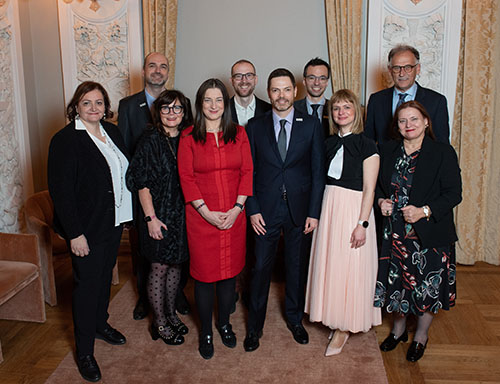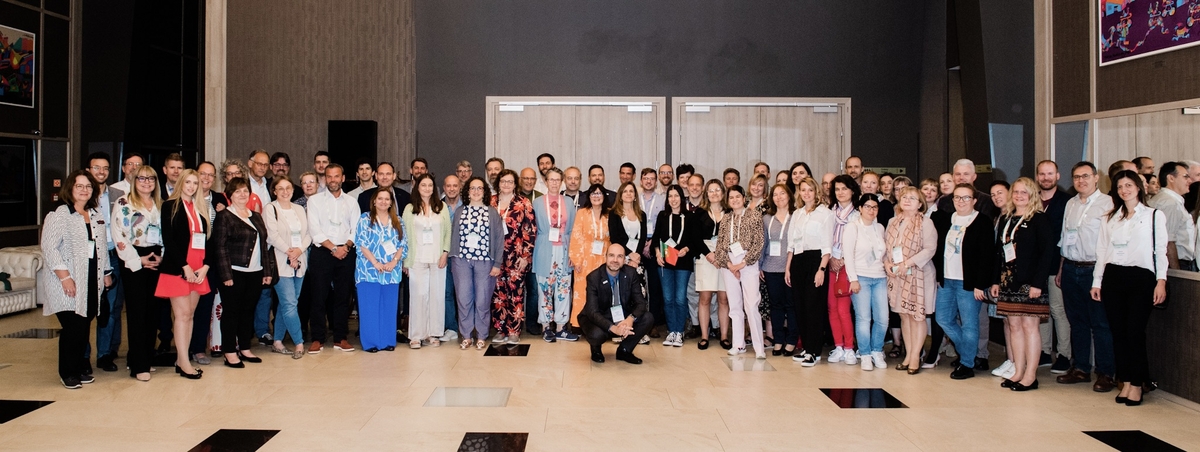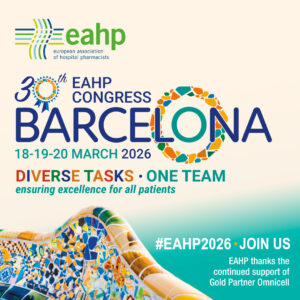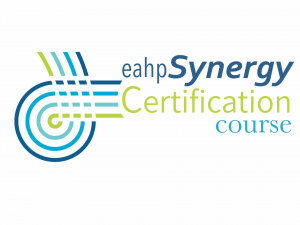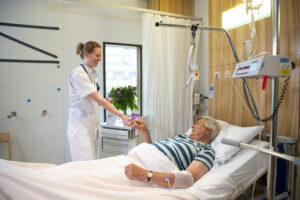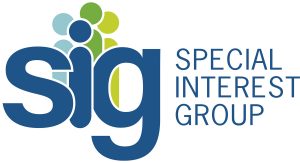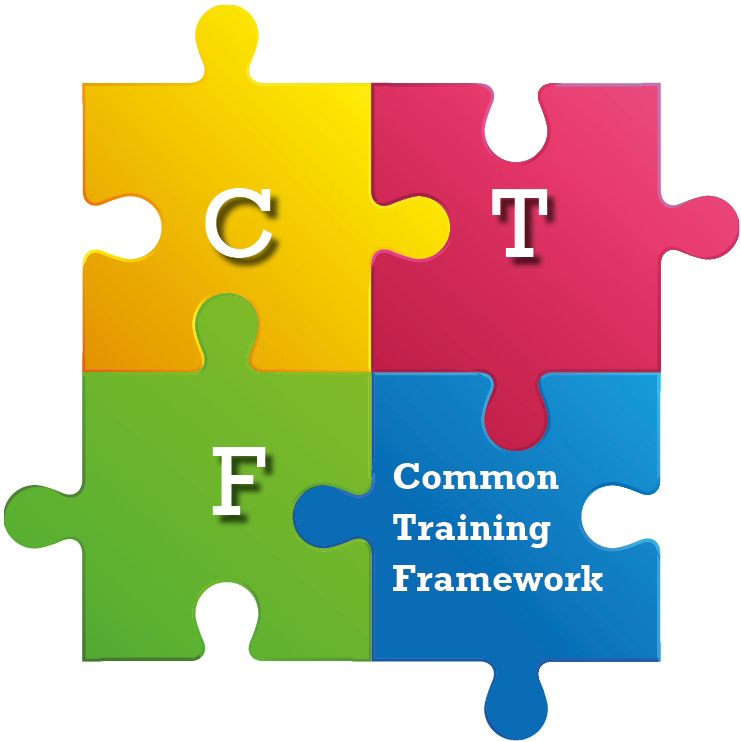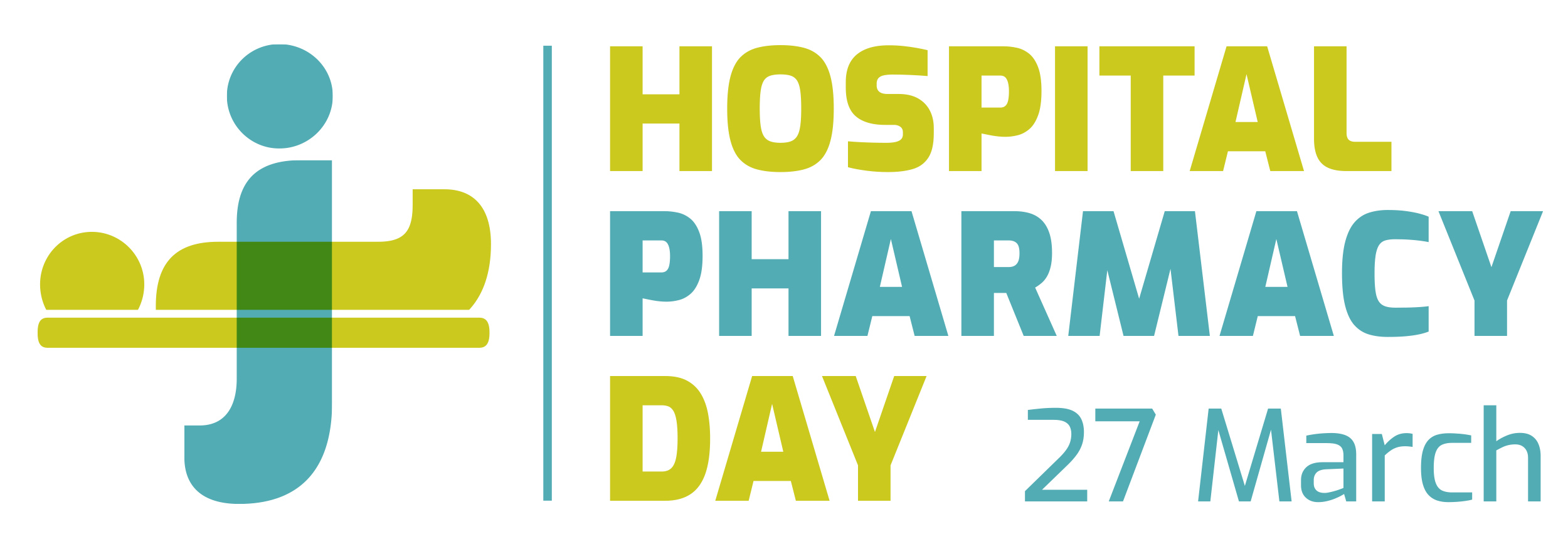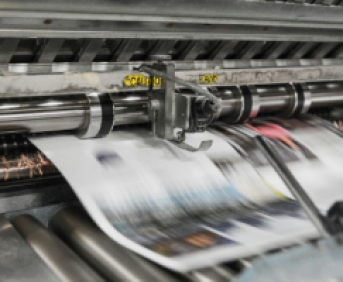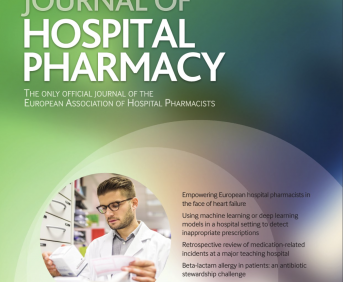HIGH-ALERT MEDICATIONS, A STEP FORWARD TO IMPROVE PATIENT SAFETY
Pdf

European Statement
Patient Safety and Quality Assurance
Why was it done?
The implementation of safe medication practices plays a key role to prevent medication errors (ME) in the hospital setting. High-alert medications (HAMs) are those that bear a heightened risk of causing significant patient harm when they are used in error. Institutions such as the Joint Commission requires that hospitals define institution-specific HAMs and implement good processes.
Our objective was to ensure safe medication hospital practices and to eliminate medication errors that may cause harm, which is a priority to achieve patient´s safety goals.
What was done?
A program for identifying and handle high-alert medications in a terciary hospital has been implemented.
How was it done?
The project was carried out in different stages:
-First of all, it was consulted the updated list (published in 2012) by the Institute for Safe Medication Practices. Therefore, a total of 186 drugs were HAMs.
-The second step was identified them using auxiliary red colour labels to warn health professionals of their potential danger.
-Finally, we defined general and specific strategies to take up with HAMs. In general strategies, plant kits were reviewed to remove unnecessary stock and limiting access to HAMs. It was also standardized HAM handling practices. In this way, specific strategies focused on: methotrexate, insulin and heparin. Regarding methotrexate administered orally, it was distributed a fact sheet indicating rules to promote it proper administration. Regarding insulin, a working group was formed to determine the available presentations, reserving the insulin pen for diabetic debuts. For the unfractionated heparin, a procedure for standardized dilution of 5% heparin was performed being the 1% heparin restricted to certain services.
What has been achieved?
A total of 186 medications were identifyed as HAMs and different strategies to prevent ME with those was defined. The main objective we have accomplished is becoming aware of their potential danger in case of error.
What next?
In the near future, our main objetives are asses the long-term impact of the implemented strategies, monitor ME involving HAMs and reassess the current list of HAMs to promote a needed safety culture in the hospital setting.
TRAINING NURSING STAFF ON SAFE DRUG ADMINISTRATION IN THE EMERGENCY DEPARTMENT
Pdf

European Statement
Patient Safety and Quality Assurance
Author(s)
Gregorio Romero Candel, Esther Domingo Chiva, Nuria Martinez Monteagudo, Jose Marco del Rio, Marca Diaz Rangel, Francisca Sanchez Rubio, Ismael Perez Alpuente, Eva Garcia Martinez, Ana Valladolid Wals
Why was it done?
The ED is an area where medication errors are common given it´s complexity, the large number of patients with different pathologies, having to make quick decisions with little clinical information and the coexistence of professionals with different training.
The use of intravenous (IV) and high risk drugs, as well as the mixture of two or more intravenous drugs in the same diluent are usual and can lead to medication errors.
We designed an educational program based on a session for nurses of the ED to standardize the use of the most commonly administered drugs and improve patient safety
What was done?
A training session for nursing staff on safe drug administration in the emergency department (ED) was performed
How was it done?
A training session was conducted by the fourth year resident during a two month rotation period in this area. The most common mistakes were presented to nurses based on national studies, as well as techniques for safe administration of drugs. Guides on parenteral administration of the hospital were reviewed with special emphasis on high risk drugs and how to manage them according to the Institute for Safe Medication Practices. We also developed a guide including the most frequent drug incompatibilities and direct intravenous administration of drugs for the ED.
What has been achieved?
The aim of the session was to train personnel at the ED in order to reduce medication errors and promote a safety culture. In turn, the development of guidelines to standardize clinical practice are useful, making information accessible and easy to use. Clinical sessions between departments allow the integration of the pharmacist in other areas.
What next?
We are still working with the ED to increase safety in drug therapy by developing new pharmacotherapeutic protocols (high risk medications protocols, perfusion protocols and new safety guidelines and training sessions). We are also working with more departments at our hospital with the experienced gained
NATIONAL CONSENSUS ON CORE COMPETENCIES FOR CLINICAL PHARMACISTS IN NORWAY
Pdf

European Statement
Clinical Pharmacy Services
Author(s)
Eliln Trapnes, Nina Carstens, Merethe Nilsen, Solveig Vist, Margareth Wiik, Janne Kutschera Sund
Why was it done?
In 2012 all the regional hospital pharmacy trusts in Norway decided to implement the IMM-model as a national method for clinical pharmacy practice in hospital settings. Although an extensive amount of training and education has been provided locally and regionally, there was a lack of defined core competencies for clinical pharmacists in Norway. Furthermore, a complete post graduate education program for clinical pharmacists did not exist. Based on this, the managements of the regional hospital pharmacy trusts requested defined skills sets and identification of relevant educational needs and opportunities.
What was done?
A joint national overview of core competencies for clinical pharmacists working in Norwegian hospitals has been compiled. Learning objectives have been defined for each of the steps in the Integrated Medicines Management (IMM)-model (Medication Reconciliation, Medication Review, Patient Counseling and Discharge Service). Relevant education opportunities were identified and recommendations on courses, practical training and other educational activities were described.
How was it done?
A group of six experienced clinical pharmacists representing all the hospital pharmacy trusts in Norway agreed upon core competencies needed to perform the main steps in the Integrated Medicines Management (IMM)-model (Medication Reconciliation, Medication Review, Patient Counseling and Discharge Service) in Norwegian hospitals. Existing education opportunities were compared to the defined learning objectives and a recommended time schedule for the training was made.
What has been achieved?
A national consensus on core competencies in clinical pharmacy services has been reached among all hospital pharmacies in Norway. The consensus, including the evaluation and recommendation of educational activities, makes it easier for leaders of clinical pharmacists to decide on which educational activities to prioritize, and for the Universities to know what educational areas they should cover.
What next?
The report with the identified core competencies will be adjusted according to local requirements and implemented in all Norwegian hospital pharmacies. Hopefully, our work will encourage further cooperation on educational activities between regions. An initiative has already started towards Norwegian Universities to try to integrate relevant competencies into the curricula of pharmacists, and this will continue.
Medical treatment of high blood pressure in patients with ileostomy
European Statement
Clinical Pharmacy Services
Author(s)
Guillaume Wabont, Jean-Philippe Hammelin, Guénaëlle Faure, Cathy Debruille, Kévin Raynaud, Pascale Guillain
Why was it done?
Clinical pharmacists and nephrologists noticed a recurrence of rehospitalization of patients who recently underwent ileostomy because of prerenal acute kidney injury. Ileostomy tends to enhance dehydration, but in each case there was a drug that was exacerbating the phenomenon by inhibiting the RAAS. The digestive and urologic surgeons had no knowledge of such pathophysiology and iatrogenia, explaining why they continued to prescribe such drugs.
What was done?
We elaborated an internal guideline for the treatment of high blood pressure (HBP) in patients with ileostomy. We decided to contraindicate to those patients the inhibitors of renin-angiotensin-aldosterone system (RAAS) such as angiotensin-converting enzyme inhibitors (ACEi), angiotensin receptor blockers (ARBs) or direct renin inhibitors (DRI); as well as the diuretics – even-though none of the summaries of the product characteristics (SmPC) of those drugs in question require such prohibition.
From now on, the drug(s) of the first line of treatment must be a beta-blocker and/or a calcic inhibitor. The drug(s) of the second line of treatment must be an alpha-blocker and/or an imidazoline-receptor agonist.
How was it done?
Therefore, we decided to set up a collective analysis of the situation with pharmacists, nephrologists and surgeons in digestive and urologic surgery, to understand the pathophysiology and to elaborate an internal guideline for HBP in patients with ileostomy.
The pharmacists first wrote a working paper retailing:
– the pathophysiology (water–electrolyte imbalance with ileostomy and deterioration under RAAS inhibitors or diuretic)
– the lack of information in the SmPC of the drugs in question
– an argued suggestion to contraindicate those drugs
– the therapeutic alternatives
Then we all met and exchanged views on the subject.
What has been achieved?
The guideline has been written in a collaborative and multi-disciplinary work. It applies to all the physicians and pharmacists of the hospital who have been informed of our approach and they have received a copy of it.
What next?
We will evaluate the respect of the guideline in our hospital as well as its impact in the lowering of the rehospitalization rate of patients who recently underwent ileostomy.
We will notify our national agency for medicines of our procedure because we think it should be a national standard.
A 72 hours training program for pharmacy residents to perform secure, optimized and standardized medication review orders: a proof of concept
European Statement
Education and Research
Author(s)
Sophie Renet, Florian Le seigneur, Ratiba Haddad, Andre Rieutord, Marie Camille Chaumais
Why was it done?
The high turn over rate of medical and pharmacy residents (every 6 months) could jeopardize the patient’s care management as they generally lack of appropriate skills upon arrival. Our former process medication review was relying on individual and heterogeneous competencies of pharmacy residents likely to lead to sub-optimal medication review and treatment optimisation. We had to design a training program for residents according to the constraints of time and characteristics of related treatment of the considered clinical ward recruited patients.
What was done?
A training program for pharmacy residents was developed and implemented. The aim was to develop the skills of the residents to allow them to perform, after 72 hours, a secure, optimized and standardized (SOS) medication review orders, according to the specificities and the “real-life practice” of the clinical department.
How was it done?
Through a collaborative approach (residents and seniors pharmacists, physicians, PhD student in education sciences), ADDIE (Analyse, Design, Development, Implantation, Evaluation) method was used. First, the most frequent pathologies and drugs prescribed in the cardiology department were identified to define specificities and thus custom the educational needs and skills that residents have to acquire to ensure a SOS medication review orders. The program included a 3 steps process over 3 days: (1) recognize the organisation and learning tools; (2) practice 3 clinical medication review orders simulation; (4) assess and feed-back with a senior clinical pharmacist. Some learning tools were developed: a training tool kit to guide the learners ; an aid kit, including a SOS medication review orders algorithm to follow throughout the whole process. Two years after implementation, 4 pharmacy residents have used this training program.
What has been achieved?
Our 72-hours-training program is routinely used for new pharmacy residents. It has been implemented successfully with a high acceptance. They also felt more comfortable to suggest therapeutic advices to the physicians.
What next?
The proof of concept of SOS was successfully done. We are currently extending it for 5th year pharmacy students and develop similar training program for other clinical wards (Surgery, oncology, immunology). In 2017, we expect to share it with our pharmacist colleagues working in the two closest hospitals.
INTEGRATION OF A PHARMACIST INTO THE EMERGENCY DEPARTMENT
European Statement
Patient Safety and Quality Assurance
Author(s)
PALOMA CRESPO-ROBLEDO, MARIA SEGURA BEDMAR, IRENE ESCRIBANO VALENCIANO, NURIA BLAZQUEZ-RAMOS, BEATRIZ MARTIN CRUZ, CARMEN MORIEL SANCHEZ
Why was it done?
Patient safety is an essential component of quality care. It’s known that EDs are an element of risk for the onset of adverse events due to conditions related to patients’ comorbidity, communication problems, medication errors and working conditions like limited information about the patient, workload, interruptions, shifts, etc. It was detected that reconciliation of medication was not performed; neither validation of the medication prescribed and medications were stocked with no order and control.
What was done?
A project was developed to increase patient safety in the Emergency Department (ED) based on the presence of a hospital pharmacist in the team.
How was it done?
First thing was to review and validate the medication prescribed in patients who were under observation, at the same time performing a reconciliation given their acute situation. This way a relationship between nurses, physicians, patients and pharmacist was established.
Then, electronic prescription software was integrated within the automated dispensing cabinet (ADC), eliminating potential errors choosing the right drug. Only when a pharmacist has checked the medication, the list appears in the display and can be taken out all at once. The main problem has been to agree the stocks and how nurses can return easily and operatively the medication in order to not accumulate it out of the ADC.
What has been achieved?
Pharmacists’ clinical figure is being disclosed in a country where Hospital Pharmacy is a central and close department. In 43 days, 428 patients got their prescription checked in the ED, 346 pharmaceutical interventions were made in 198 patients, a median (IQR) average of 1 (1,2) interventions per patient. The main reason for an intervention was the adequacy to pharmaceutical forms included in the Hospital(n=130), followed by reconciliation interventions(n=77). Category of errors detected were mostly B (NCC MERP), showing pharmacists can detect an error occurred but that did not reach the patient
What next?
Hospital pharmacists should show their clinical and logistic potential, fighting with other health professionals to increase safety and care in patients. ED is the entrance of patients into the health system and where more errors can be committed, the work of a pharmacist should start at ED to prevent errors and give support and be part of the team.
EMERGENCY DEPARTMENT PHARMACY ROTATION, WHAT IS A PHARMACY RESIDENT DOING HERE?
Pdf

European Statement
Patient Safety and Quality Assurance
Author(s)
Nuria Monteagudo-Martínez, Ana Valladolid-Walsh, Gregorio Romero-Candel, Esther Domingo-Chiva, Jose Marco-del Río, Marca Diaz-Rangel, Francisca Sanchez-Rubio
Why was it done?
To acquire clinical skills in this setting and detect and prevent medication errors. It is also an area in which pharmacists had previously never participated in our hospital and it was an opportunity to integrate in this multidisciplinary team.
What was done?
Hospital pharmacy specialization programs include one year of rotations in clinical areas. The emergency department (ED) was chosen in order to develop a program to detect and prevent medication errors as a part of a multidisciplinary team.
Other tasks such as organizing drug storage, drug labelling and conservation, nurse counselling and education on issues related to medication were developed.
How was it done?
The pharmacy resident completed a rotation period based on the national educational program in clinical areas. Over a two month rotation period she reviewed treatments (61 patients, detecting 67 medication errors), organized and labelled drug storage, listed and identified thermolabile drugs, participated in a protocol design,…
What has been achieved?
The resident was able to improve care in acute patients in the ED. The most common errors found and prevented were: missed doses (25.3%); incorrect form to administer the drug (incompatibility diluent, infusion rate…) (13.4%); drug interaction/incompatibility (8.9%) and others.
The resident was able to organized refrigerator drug stored and developed a protocol to explain how to act in case of fridge failure.
What next?
To try to implement an ED-based clinical pharmacist program in order to detect and manage medication errors to improve safety in drug therapy, as well as to contribute to patient care with a different point of view from clinicians.
HOSPITAL PHARMACY CONTRIBUTION TO CLINICAL TRIALS: TYPIFICATION OF MEDICATION INCIDENTS AND PHARMACEUTICAL INTERVENTIONS IN A CLINICAL TRIAL UNIT
Pdf

European Statement
Patient Safety and Quality Assurance
Author(s)
Paula Arrabal-Durán, Carmen Herrero-Domínguez-Berrueta, María Norberta Sánchez-Fresneda, Ana Mur-Mur, Ana Herranz-Alonso, María Sanjurjo-Sáez
Why was it done?
MI and PI are normally recorded in Hospital Pharmacy Services as a method for evaluating safety. Nevertheless, classical methods for reporting MI do not allow for a correct classification in the field of clinical trials. The reason is their more complex processes involving drugs compared to the processes in daily clinical practice. If there are no specific categories, the information obtained by recording usually gets lost and could not reflect exactly what occurred. In September 2016, a clinical tool to notify MI and PI was implemented in the Pharmacy Service, with the aim of unifying their classification criteria and gathering complete information for analysis and further implementation of improvement measures.
What was done?
A database to notify medication incidents (MI) and pharmaceutical interventions (PI) in the Clinical Trials Unit was developed in the Pharmacy Service of a tertiary hospital.
How was it done?
All the processes involving drugs in clinical trials were evaluated by a Failure Mode and Effects Analysis (FMEA). For each process, the possible incidents and their resulting effects on the patient were recorded. After that, a database was designed in Microsoft® Access with defined lists of choices to allow pharmacists notify both MI and PI that occur in the Clinical Trials Unit.
What has been achieved?
A database with the following information has been implemented:
a) Identification of the MI:
1. Date of the MI.
2. Number of patient.
3. Clinical Trial protocol.
4. Investigational product.
b) Process in which the MI took place (16 options).
c) Process in which the MI was detected (16 options).
d) Process that caused the MI (24 options).
e) Person who detected the MI (9 options).
f) Did any PI take place? (Yes/No).
g) PI performed (12 options).
h) Did the MI reach the patient? (Yes/No).
i) MI that reached the patient (21 options).
j) Patient outcome (8 options).
k) Effect in the clinical trial (4 options).
What next?
The implemented notification system will be further expanded and adapted over time.
Future aim is to analyse MI for establishing improvement measures and checking their results.
MAKING CLINICAL PHARMACY ESSENTIAL IN A LARGE UNIVERSITY HOSPITAL
Pdf

European Statement
Clinical Pharmacy Services
Author(s)
Janne Kutschera Sund, Martin Grotnes, Ingvild Klevan, Lene Lilleaas, Johan Fredrik Skomsvoll
Why was it done?
Lack of comprehensive strategies and funding has made it difficult to develop and implement extensive clinical pharmacy services in our hospital. It has been challenging to secure hospital involvement. A new financial model securing funding from the regional health authority made way for a new joint approach.
What was done?
A dialog based process involving hospital management, clinicians and the pharmacy led to a large increase in clinical pharmacy services in our university hospital.
How was it done?
A literature review was conducted. Based on this, a multidisciplinary project group decided that all clinics and wards were eligible for clinical pharmacy services and should receive extensive information on the topic. As there were limited resources allocated, all clinics were asked to apply for the service. The hospital management received applications three times the number of funded clinical pharmacists.
Prioritizing was based on the following criteria; use of the Integrated Medicines Management (IMM)-method, patient flow, evaluation and research, in- or out –patient clinics, continuation of established services, localization and time schedules on the wards.
What has been achieved?
The long term funding of clinical pharmacy in the health region enabled the hospital pharmacy to recruit and educate highly competent clinical pharmacists.
In less than a year, the number of clinical pharmacists has increased from three to twelve. The number of wards receiving clinical pharmacy services has also grown from three to twelve and there are still plans for further implementation.
The hospital and the ward managements are much more involved in evolving a common patient safety strategy with focus on medication. Specific quality indicators for each patient population and ward are being developed, and clinical pharmacists are now important members of multidisciplinary teams all over the hospital. Pharmacists are integrated in ongoing clinical research projects and publishing.
User surveys show that clinical pharmacy is assessed as a highly beneficial service by both nurses and physicians.
What next?
Develop the IMM-model to include the clinical pharmacists in standard patient care in every clinic and department. We plan to perform follow-up studies on the effects of clinical pharmacy services in different settings.
DISCHARGE MANAGEMENT: SAFER DISCHARGES AND IMPROVED INFORMATION TRANSFER METRICS
Pdf

European Statement
Clinical Pharmacy Services
Author(s)
Marie-Claire Jago-Byrne, Sinead McCool, Caroline Reidy, Stephen Byrne
Why was it done?
Published research had demonstrated that 50% of discharge prescriptions were non-reconciled(1). A recent study demonstrated that 43% of patients experienced post-discharge medication errors(2). The prevalence of polypharmacy (>5 medications) has increased over the 15 years to 2012, from 17.8% to 60.4% in people 65 years and older in Ireland(3).
What was done?
The aim of this project was to improve medication safety at the point of hospital discharge by using targeted medication reconciliation and producing a computer-generated prescription. This new model for discharge prescribing was introduced for patients who met both of the following criteria in two acute hospitals:
• Prescribed 9 or more medications, at the time of admission.
• Aged 70 years and over
How was it done?
The new model for discharge prescribing used collaborative medication reconciliation and the e-Discharge software to improve the quality of discharge prescriptions. The model was introduced in both hospitals and received support from community and hospital colleagues. Clinical pharmacists became the project champions and worked closely with medics during the change process. Key safety aspects were:
• Clinical double check for this high-risk process- the pharmacist and the doctor sign the prescription.
• Increased legibility
• Explanation for all prescription changes to community colleagues.
Phase 2: The software was further tested on 200 patients in a bench top exercise
What has been achieved?
Phase 1: The overall compliance with the national discharge prescription standards increased from 50.4% to 96.9% with the new model for discharge prescribing. The biggest change in compliance was observed in the three communication categories, which explain to community healthcare providers the rationale behind the medication changes made during the hospital stay. A user acceptability survey of HCP involved in the project demonstrated that all those involved had benefited from improved workflows in hospital and community settings, and more appropriate and efficient use of resources. All users requested expansion of this service.
Phase 2: This review allowed for the improvement of the e-Discharge Software using anonymised patient cases to test issues identified in Phase 1.
What next?
In Phase 3 the model will be introduced to a third hospital to evaluate transferability of the concept alongside current practice outlined above
